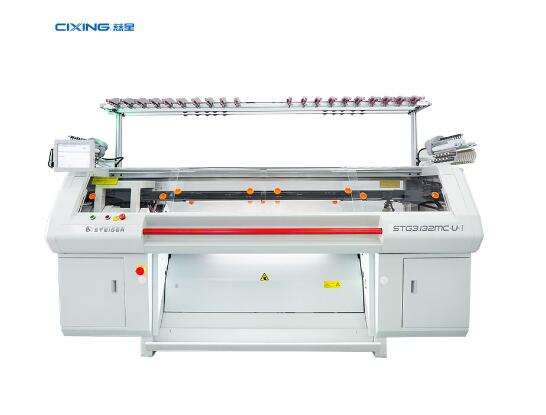Choosing the Right Stitch: Considerations for Selecting a Knitting Machine for Your Textile Application
2023-12-20
Introduction:
In the intricate world of textile manufacturing, the selection of a knitting machine is akin to choosing the right brush for a painting. The machine you choose becomes the artisan, crafting the fabric masterpiece that aligns with the requirements of your specific application or industry. In this blog post, we'll unravel the key considerations that are crucial when selecting a knitting machine tailored to meet the unique demands of your textile application.
1. Understand Your Application:
- Define Your Purpose:
- Clearly define the purpose of your textile application. Is it for fashion garments, sportswear, industrial fabrics, or intricate designs?
- Consider End-Use Requirements:
- Understand the specific qualities your fabric needs, such as stretch, durability, texture, or breathability.
2. Fabric Type and Yarn Compatibility:
- Identify Fabric Characteristics:
- Different machines are suited for various fabric characteristics. Consider factors like weight, thickness, and stretch.
- Yarn Compatibility:
- Ensure the machine is compatible with the yarn types you plan to use, whether natural fibers, synthetic blends, or specialty yarns.
3. Knitting Machine Type:
- Circular vs. Flat Knitting:
- Decide between circular and flat knitting based on your application's requirements. Circular machines are seamless, ideal for basics, while flat knitting allows for precise detailing and shaping.
- Single vs. Double Jersey Machines:
- Consider whether a single jersey or double jersey machine is more suitable for your application. Double jersey machines can produce reversible fabrics with different textures on each side.
4. Machine Gauge:
- Fine vs. Coarse Gauges:
- Choose the appropriate gauge based on the desired fabric characteristics. Fine gauges create intricate details, while coarse gauges produce chunkier textures.
- Consider Stitch Density:
- Evaluate how the machine's gauge influences stitch density, affecting fabric weight, thickness, and overall appearance.
5. Stitch Patterns and Complexity:
- Pattern Complexity:
- Assess the machine's capability to create the stitch patterns required for your application, whether it involves cables, ribs, lace, or other intricate designs.
- Texture and Detailing:
- Consider how well the machine can capture and express the texture and detailing you envision for your fabric.
Conclusion: Weaving Success into Every Stitch:
Selecting the right knitting machine for your textile application is a meticulous process that involves considering a myriad of factors. Each consideration, from machine type and gauge to technology and infrastructure, weaves into the fabric of your production success. By carefully assessing your specific needs and envisioning the characteristics of the final textile masterpiece, you can ensure that the chosen machine becomes the artisan that crafts textiles aligned with your industry's demands. In the world of textile manufacturing, the right stitch, guided by the right machine, becomes the brushstroke that paints the canvas of innovation and excellence.



